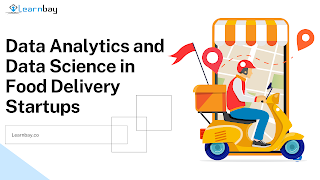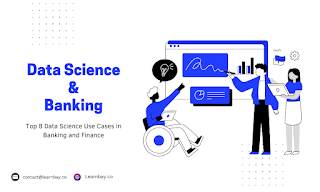Trends in Data Science for 2023 and Beyond
New technologies are making firms more productive and improving their return on investment. Current developments include data analytics, artificial intelligence, big data, and data science. Business companies are implementing data-driven models to streamline operations and make decisions based on data analytics findings.
Small and big businesses had to adjust swiftly as the epidemic impacted sectors worldwide. As a result, expenditures in data analytics and data science soared, and practically every firm now significantly relies on data. The relevance of data analytics is discussed in this article, along with the most recent data science trends and business trends.
Check out the online data science course in Bangalore to get started in this exciting field.
Data Science
Data analysis to gain insightful conclusions is known as data science. These insights' data may be derived from various sources, including databases, commercial transactions, sensors, and more. As a result, it's a rapidly expanding profession with almost endless work opportunities.
Overview of Data Analytics
The analysis of unprocessed data to draw conclusions is known as data analytics. With data analytics, businesses may improve their performance, become more efficient, increase revenues, or make more strategic decisions. The creation of mechanical methods and algorithms that are utilized over raw data results from automating data analytics approaches and procedures.
Different methods of data analysis:
Descriptive analytics to explain what occurred
Diagnostic Analytics: Determining the cause of the event
Predictive analytics: Foretelling future events and
Prescriptive Analytics: What should be done
The majority of data manipulation is done by data analysts using spreadsheets, data mining software, data visualization tools, or open-source programming languages. In data science, trend analysis is a technical analysis approach that tries to predict future stock price movements using trend data that has already been seen.
Leading Data Science Trends for 2023 and Beyond
These are a few instances of data science trends:
TinyML and Small Data
Big Data refers to the rapidly expanding amount of digital data we produce, gather, and analyze. It's not only massive data; the ML algorithms we employ to handle the data are also pretty large. It is the largest and most complicated system capable of mimicking human language, with over 175 billion parameters. It is one of the upcoming trends in data science.
While working with cloud-based systems with unlimited bandwidth would be acceptable, that won't cover all the situations in which ML might be useful. As a result, "small data" has developed to digest data rapidly and effectively in situations when bandwidth is limited and time is of the essence.
The idea of edge computing and this connectivity are closely related. Self-driving cars cannot rely on a centralized cloud server to send and receive information when attempting to avoid a traffic collision in an emergency.
TinyML applications include:
Object recognition and classification
Gesture recognition
Keyword spotting
Machine monitoring
Audio detection
Data-Driven Consumer Experience
It represents one of the most recent developments in data science. Businesses are supposed to utilize the data to offer experiences that are more valuable, desirable, or pleasurable. When contacting customer support, the software may be more transferable between departments, more user-friendly, and decrease friction and bother in e-commerce.
This can track and evaluate every facet of interactions with companies as they become more digital, from AI chatbots to Amazon's convenience stores without cashiers, in order to uncover methods to streamline procedures or make them more fun. As a result, companies are starting to provide more individualized goods and services.
Due to the epidemic, businesses started to engage in and innovate in online retail technologies in an effort to replace the physical, tactile experiences of brick-and-mortar purchasing. In 2023, a large portion of the data science community will concentrate on developing new strategies for utilizing this client data to produce superior and distinctive customer experiences.
Convergence
The pillars of today's digital world are artificial intelligence (AI), cloud computing, the Internet of Things (IoT), and ultrafast networks like 5G, and data is the gasoline that powers them all. These technologies represent some of the newest developments in data science. When combined, these technologies have a far greater impact than when utilized separately.
By utilizing artificial intelligence, smart homes, industries, and cities can now be built, allowing IoT devices to function as intelligently as possible without human interaction. 5G and other ultra-fast networks will enable new sorts of data transport and more fantastic data transmission speeds (such as superfast broadband and mobile video streaming).
Data scientists play a vital role in ensuring optimal data transfer rates since they apply AI algorithms to guarantee optimal transfer speeds, automate data center environmental controls, and route traffic. Strong data science efforts will be made to make sure that these disruptive technologies function in harmony when they collide in 2023.
Auto ML
It belongs to the current data science trends. AutoML is a movement that is "democratizing" machine learning and "democratizing" data science. ML-based apps may be produced by anybody utilizing the platforms and tools created by the creators of autoML solutions.
The program is directed mostly at subject matter specialists who lack the technical abilities necessary to apply AI to those challenges, even though it is intended to solve the most pressing issues in their industries.
The tedious and boring activities of cleaning and preparing data are typical for data scientists to take a lot of time. Automating these processes is the core tenet of machine learning, but it has expanded to encompass creating models, algorithms, and neural networks. Everyone with an issue they want to test will be able to employ machine learning thanks to straightforward, user-friendly interfaces that hide the underlying workings of ML.
AI and Databases Based on Cloud
It is challenging to gather, categorize, clean, arrange, format, and analyze this enormous amount of data in one place. Platforms running on the cloud are becoming increasingly well-liked as a solution to this problem.
A cloud computing database will revolutionize the future data science and AI fields. Cloud computing allows companies to handle their duties more effectively and efficiently while protecting their data. It is one of the data science trends of the future.
Data Visualization
The practice of presenting information graphically is called data visualization. Data visualization tools let you spot patterns, trends, and outliers in data by using visual elements like charts, graphs, and maps.
Also, it enables workers or company owners to convey facts without confounding audiences who are not technically savvy. It is among the hottest subjects in data science. Data visualization tools and technologies are needed for large-scale data analysis and decision-making.
Data Visualization tools provide the following benefits:
Visualize patterns and relationships
Investigate interactive possibilities
Being able to communicate information quickly
Other data visualization solutions include Tableau, Microsoft Power BI, and Google Data Studio.
Scalability in Artificial Intelligence
Statistics, systems design, machine learning implementations, and data mining are all in today's enterprises. These elements must be merged into adaptable, scalable models that can manage massive volumes of data for coherence. For the following reasons, studying or being familiar with scalable AI would be beneficial.
Algorithms, data models, and infrastructure that can operate at the speed, scale, and complexity needed for the task are called scalable AI. Scalability helps to resolve data scarcity and to gather challenges by reusing and integrating scaling capabilities across different business problem statements.
Setting up data pipelines, designing extensible system architectures, implementing contemporary acquisition procedures, utilizing quick advancements in AI technologies, and building and deploying data pipelines are all necessary to develop ML and AI for scalability. To apply artificial intelligence to important tasks using edge devices that are network- and cloud-enabled and centralized data center capabilities.
Final Thoughts
These are a few of the current and upcoming trends in data science that will spur new developments in the field. To find out how long it would take you to study the principles and trends in data science, look into the data science course in Pune. Boost your profession with this training course and real-world projects.




Comments
Post a Comment